
Dubrovnik: The Pearl of the Adriatic
Discover the medieval charm and coastal beauty of Dubrovnik, Croatia's historical gem on the Adriatic Sea, known for its iconic city walls and UNESCO World Heritage Old Town.
Dubrovnik, often referred to as the 'Pearl of the Adriatic', is a stunning city on the southern coast of Croatia. Known for its well-preserved medieval architecture, the city's Old Town is a UNESCO World Heritage Site. Enclosed by massive stone walls, the Old Town features winding streets, historic buildings, and charming squares that transport visitors back in time. A walk along the ancient city walls offers panoramic views of the Adriatic Sea and the iconic red rooftops of Dubrovnik. Visitors can explore landmarks such as the Rector's Palace, St. Blaise's Church, and the Cathedral of the Assumption. The city's rich history is also showcased in its many museums, including the Maritime Museum and the Franciscan Monastery Museum. Dubrovnik's coastal location means that beautiful beaches are never far away. Banje Beach, located just outside the city walls, is a popular spot for sunbathing and swimming. For a more secluded experience, take a boat trip to the nearby Lokrum Island, a nature reserve with lush gardens and crystal-clear waters. The city is also a haven for food lovers, with a wide range of restaurants offering fresh seafood and traditional Croatian dishes. Be sure to try local specialties such as 'black risotto' and 'pasticada'. As the sun sets, Dubrovnik's nightlife comes alive with bustling bars and vibrant cafes, providing the perfect end to a day of exploration.
Local tips in Dubrovnik
- Visit the Old Town early in the morning or late in the afternoon to avoid crowds.
- Wear comfortable shoes as the streets are cobblestone and walking the city walls can be tiring.
- Consider getting a Dubrovnik Card for discounts on attractions and free public transport.
- Try to visit Lokrum Island during weekdays to avoid weekend crowds.
- Local buses are efficient and a good way to get around the city if you don't want to walk.
- Always carry cash as some smaller establishments may not accept credit cards.
Neighbourhoods in Dubrovnik
Dubrovnik: The Pearl of the Adriatic
Dubrovnik, often referred to as the 'Pearl of the Adriatic', is a stunning city on the southern coast of Croatia. Known for its well-preserved medieval architecture, the city's Old Town is a UNESCO World Heritage Site. Enclosed by massive stone walls, the Old Town features winding streets, historic buildings, and charming squares that transport visitors back in time. A walk along the ancient city walls offers panoramic views of the Adriatic Sea and the iconic red rooftops of Dubrovnik. Visitors can explore landmarks such as the Rector's Palace, St. Blaise's Church, and the Cathedral of the Assumption. The city's rich history is also showcased in its many museums, including the Maritime Museum and the Franciscan Monastery Museum. Dubrovnik's coastal location means that beautiful beaches are never far away. Banje Beach, located just outside the city walls, is a popular spot for sunbathing and swimming. For a more secluded experience, take a boat trip to the nearby Lokrum Island, a nature reserve with lush gardens and crystal-clear waters. The city is also a haven for food lovers, with a wide range of restaurants offering fresh seafood and traditional Croatian dishes. Be sure to try local specialties such as 'black risotto' and 'pasticada'. As the sun sets, Dubrovnik's nightlife comes alive with bustling bars and vibrant cafes, providing the perfect end to a day of exploration.
When is the best time to go to Dubrovnik?
Iconic landmarks you can’t miss
Dubrovnik City Walls
Explore the stunning Dubrovnik City Walls, a UNESCO World Heritage Site offering breathtaking views and rich historical significance for all travelers.
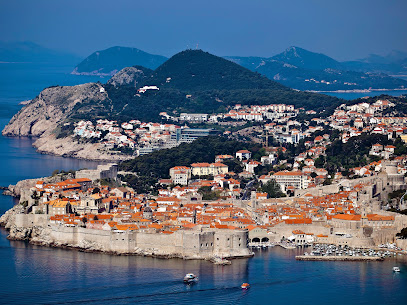
Dubrovnik Cable Car
Experience breathtaking views of Dubrovnik and the Adriatic Sea aboard the Dubrovnik Cable Car, a must-visit for every traveler.
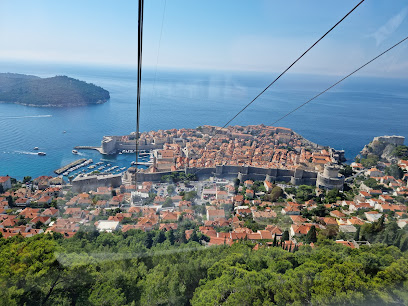
Fort Lovrijenac
Discover the historical wonders and breathtaking views at Fort Lovrijenac, a must-visit fortress overlooking the stunning Adriatic Sea in Dubrovnik.

Porat Dubrovnik
Discover the beauty and history of Porat Dubrovnik, a serene tourist attraction in Croatia offering breathtaking views and cultural experiences.
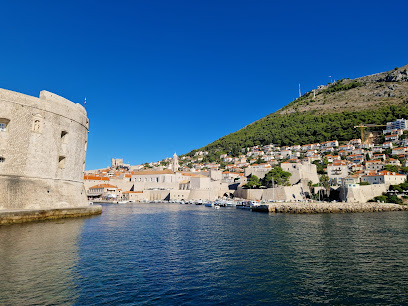
The Cathedral of the Assumption of the Virgin Mary
Explore the stunning Cathedral of the Assumption of the Virgin Mary in Dubrovnik, a masterpiece of Baroque architecture and rich history.
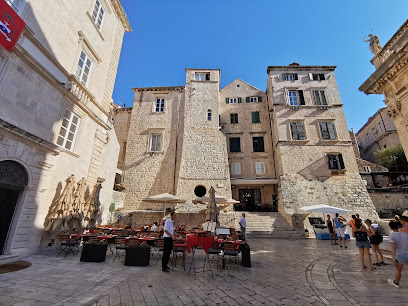
Rector's Palace
Explore Rector's Palace in Dubrovnik, a stunning museum showcasing the city's rich history and architectural beauty, perfect for tourists seeking cultural experiences.
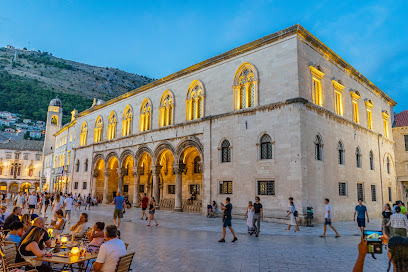
Fort Imperial
Explore the historic Fort Imperial in Dubrovnik, a majestic fortress offering breathtaking views and rich military history.
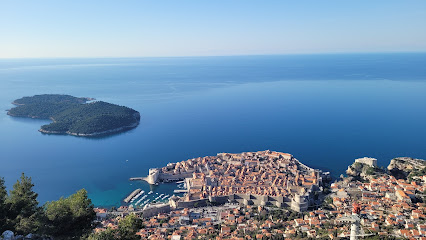
Dubrovnik Walks
Discover Dubrovnik's rich history and breathtaking landscapes with expert-guided tours from Dubrovnik Walks, a top-rated sightseeing agency.
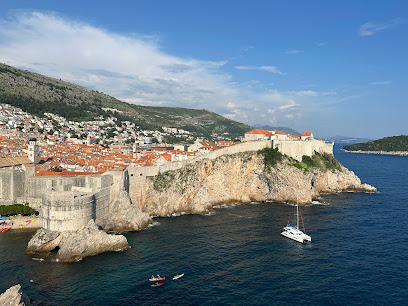
Sponza Palace
Discover the architectural beauty and historical significance of Sponza Palace, a must-visit landmark in the heart of Dubrovnik's Old Town.
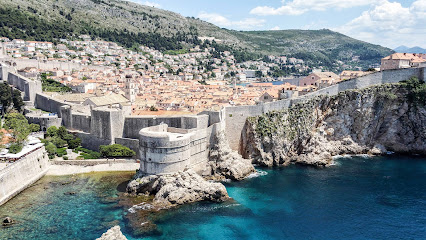
Free Spirit Tours - Dubrovnik free walking tour and other tours
Experience the rich history and breathtaking beauty of Dubrovnik with Free Spirit Tours, your gateway to unforgettable sightseeing adventures.
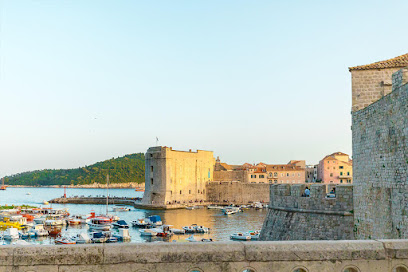
Pile Gate
Explore the historic Pile Gate, where ancient architecture meets the vibrant culture of Dubrovnik's Old Town.

Onofrio's Large Fountain
Discover Onofrio's Large Fountain in Dubrovnik: a historic landmark blending stunning architecture with refreshing waters in a vibrant cultural setting.
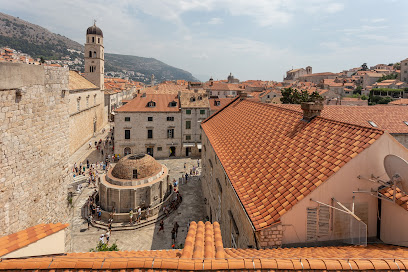
Church of St. Blaise
Explore the Church of St. Blaise, a baroque masterpiece and cultural gem in Dubrovnik, showcasing stunning architecture and rich history.
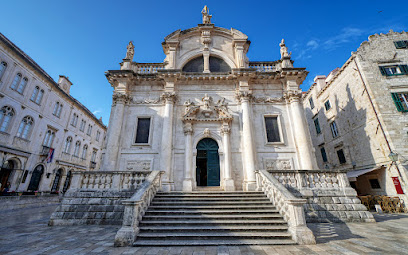
Franciscan Church and Monastery
Experience the tranquility and rich history of the Franciscan Church and Monastery in Dubrovnik, a serene escape in the heart of Croatia's cultural gem.
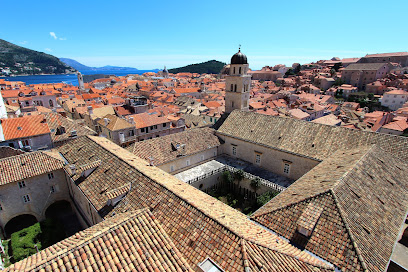
Tvrđava Minčeta
Discover Tvrđava Minčeta, a historic fortress in Dubrovnik offering breathtaking views and a deep dive into Croatia's rich past.
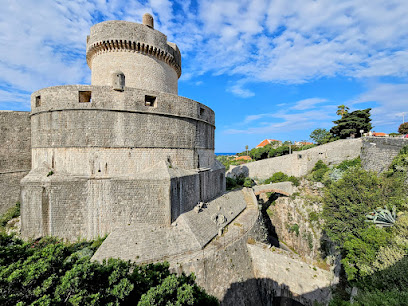
Unmissable attractions to see
Dubrovnik Cable Car
Explore breathtaking views of Dubrovnik and the Adriatic Sea from the heights of Mount Srđ on the Dubrovnik Cable Car.
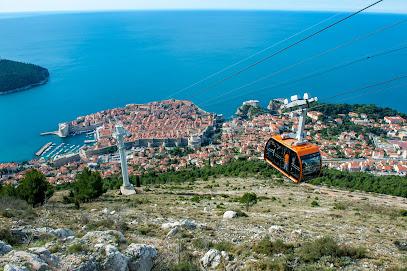
Fort Lovrijenac
Explore the historic Fort Lovrijenac in Dubrovnik, a stunning fortress offering breathtaking views and a glimpse into the city's rich history.
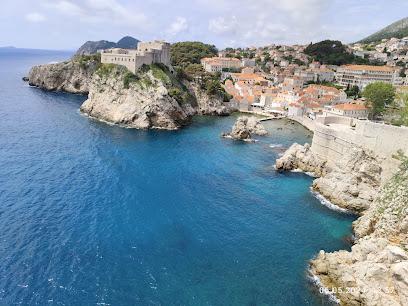
Hercegovačka Gračanica Temple
Immerse yourself in the spiritual beauty of Hercegovacka Gracanica Temple, a stunning Orthodox church in Trebinje with breathtaking views and rich heritage.
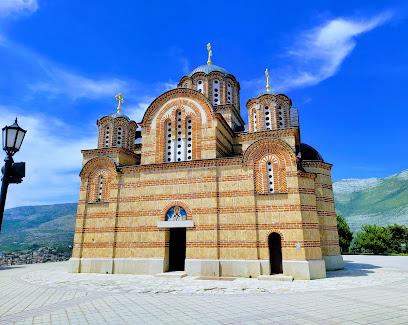
The Cathedral of the Assumption of the Virgin Mary
Discover the stunning Cathedral of the Assumption of the Virgin Mary in Dubrovnik, a magnificent blend of history, art, and spirituality nestled in Croatia's iconic Old Town.
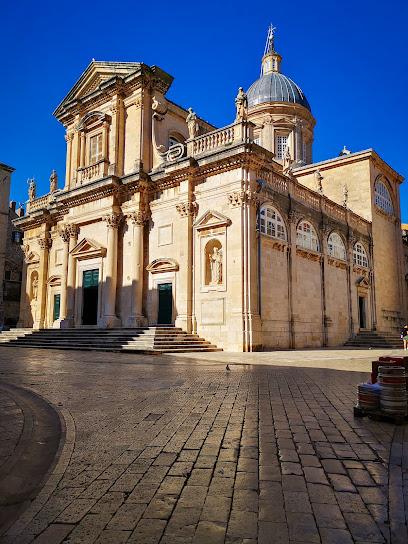
Dubrovnik Walking Tours
Experience the historical beauty of Big Onofrio's Fountain, a central landmark of Dubrovnik's Old Town, rich in culture and architectural splendor.
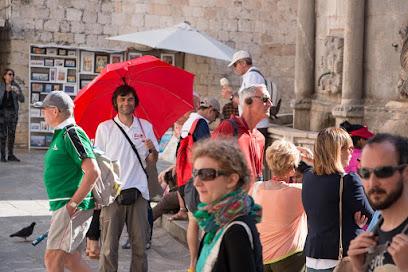
Trsteno Arboretum
Explore the Trsteno Arboretum, a historical botanical garden in Croatia showcasing Mediterranean flora and breathtaking views of the Adriatic Sea.
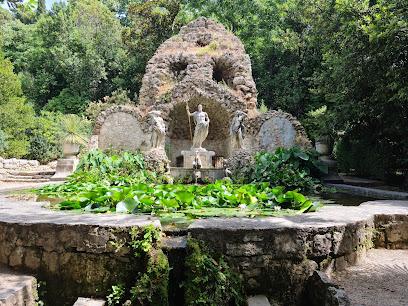
Dubrovnik Walks
Discover the wonders of Dubrovnik through expertly guided tours, from historical walks to thrilling kayaking adventures along the beautiful coastline.
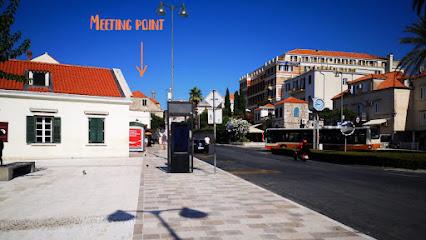
Pasjača Beach
Discover the hidden beauty of Pasjača Beach in Popovići, Croatia, where crystal-clear waters meet stunning cliffs for an unforgettable beach experience.
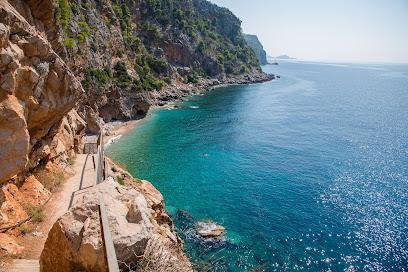
Žanjic Beach
Experience the tranquil beauty of Žanjic Beach, a must-visit public beach in Montenegro known for its clear waters and stunning landscapes.
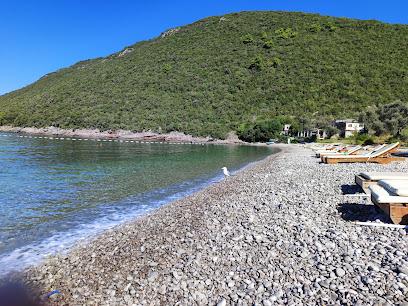
Rector's Palace
Explore the stunning Rector's Palace in Dubrovnik, a historic museum showcasing the city's rich heritage, art, and architecture.

Beach Sunj
Discover the serene beauty of Beach Sunj in Lopud, Croatia, where soft sands meet crystal-clear waters in a perfect coastal paradise.
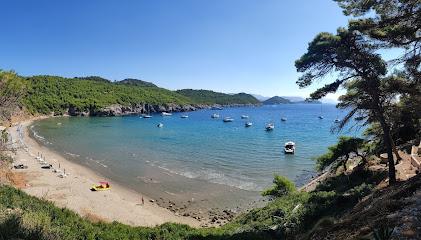
Cave Bar More
Experience the enchanting ambiance of Cave Bar More, a unique bar nestled in a cave overlooking the stunning Adriatic Sea in Dubrovnik.
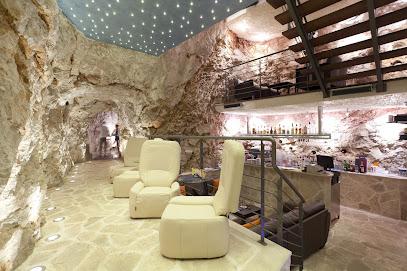
Stonske zidine
Experience the breathtaking Stonske Zidine, Croatia's remarkable historical walls offering scenic views and a rich cultural journey.
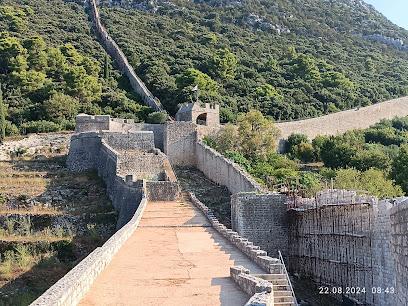
Uvala Lapad Beach
Discover the serene beauty of Uvala Lapad Beach in Dubrovnik, where golden sands meet crystal-clear waters amidst a vibrant promenade.
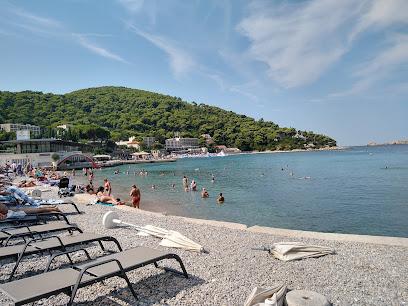
Fort Imperial
Discover the breathtaking views and rich history at Fort Imperial, a historic fortress overlooking Dubrovnik's stunning coastline.
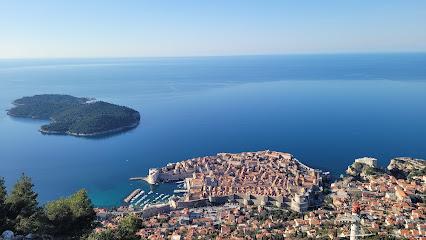
Essential places to dine
Dubravka 1836 Restaurant & Cafe
Experience authentic Mediterranean dining at Dubravka 1836 Restaurant & Cafe in Dubrovnik – where stunning views meet exquisite flavors.

Restaurant Panorama
Experience exquisite Mediterranean cuisine with breathtaking views at Restaurant Panorama in Dubrovnik.
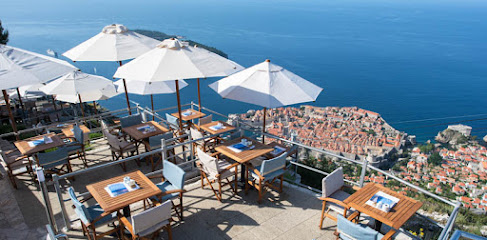
Gradska kavana Arsenal Restaurant
Experience the best of Croatian and Mediterranean cuisine at Gradska kavana Arsenal in the heart of Dubrovnik.
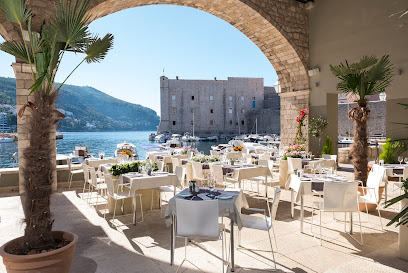
Taj Mahal Old Town
Discover authentic Eastern European flavors at Taj Mahal Old Town in Dubrovnik – a delightful spot for brunch or dinner.
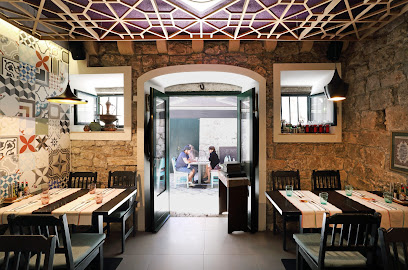
Barba
Discover Barba in Dubrovnik: A delightful restaurant offering fresh local cuisine in an inviting atmosphere at affordable prices.
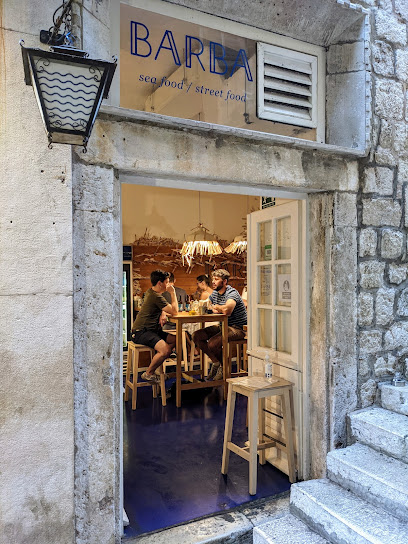
Yacht Club Orsan
Experience exquisite Mediterranean flavors at Yacht Club Orsan in Dubrovnik, where every meal is paired with stunning sea views.
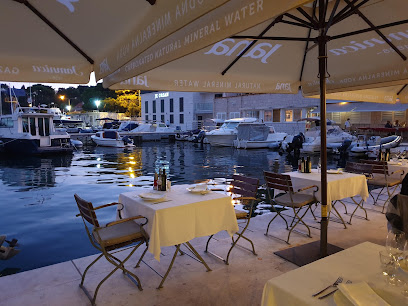
Pantarul
Experience innovative Croatian cuisine at Pantarul, where fresh ingredients meet culinary creativity in beautiful Dubrovnik.
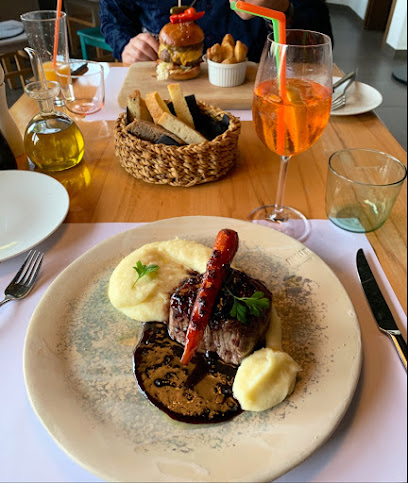
Restaurant & Bar Rudjer
Experience exquisite Mediterranean cuisine at Restaurant & Bar Rudjer in Dubrovnik - your go-to spot for breakfast, brunch, and unforgettable dinners.
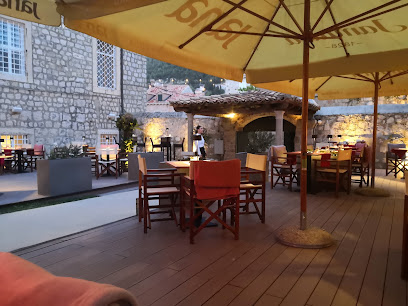
Lucin Kantun Dubrovnik
Experience authentic Croatian tapas at Lucin Kantun in Dubrovnik - where local flavors meet Mediterranean charm.
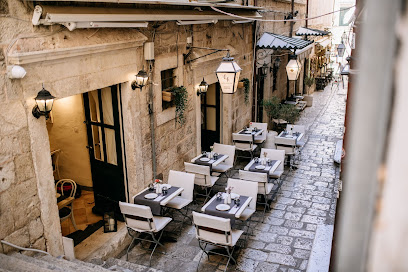
Poklisar Restaurant
Discover Mediterranean culinary delights at Poklisar Restaurant in Dubrovnik - where every meal is a celebration of flavor and tradition.
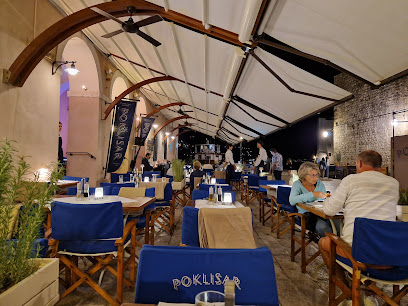
LADY PI-PI
Experience exquisite Mediterranean cuisine with stunning views at Lady Pi-Pi in Dubrovnik – a culinary gem by the Adriatic Sea.
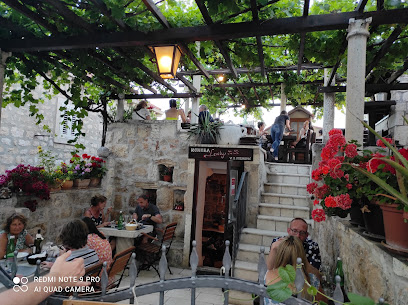
Trattoria Carmen
Discover Trattoria Carmen in Dubrovnik – where authentic Italian flavors meet stunning coastal views in an inviting atmosphere.
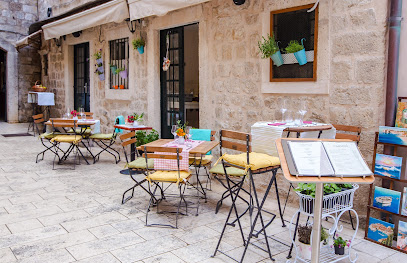
Levanat
Experience Mediterranean cuisine at Levanat in Dubrovnik - where fresh seafood meets stunning Adriatic views for an unforgettable dining adventure.
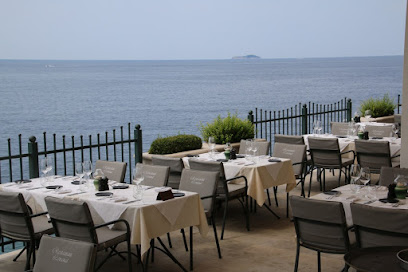
Bota Šare Oyster & Sushi Bar
Experience the best of Dubrovnik's seafood at Bota Šare Oyster & Sushi Bar – where fresh flavors meet stunning views.
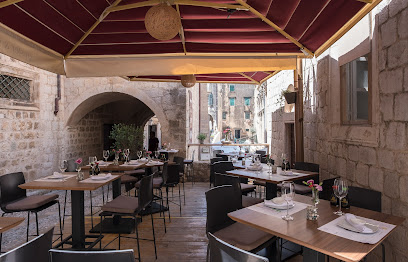
Fish Restaurant Proto
Discover authentic Croatian seafood at Fish Restaurant Proto in Dubrovnik – where every dish celebrates the Mediterranean's finest flavors.
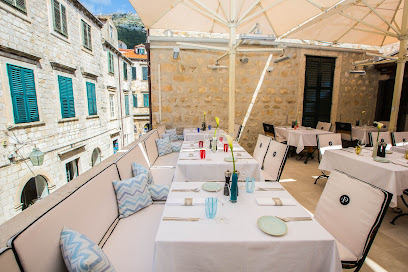
Markets, malls and hidden boutiques
Dubrovnik Shopping Minčeta
Discover a delightful shopping experience at Dubrovnik Shopping Minčeta, where local charm meets international brands in the heart of Croatia.
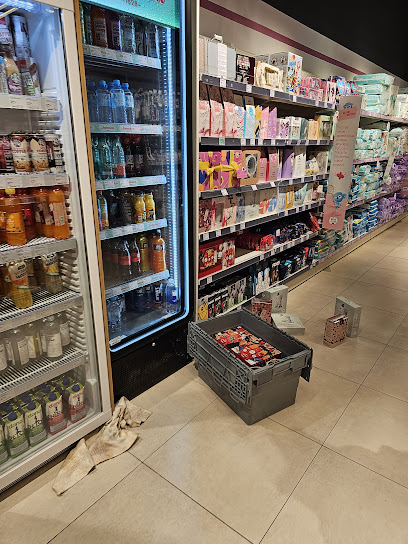
DOC DUBROVNIK Shopping Center
Explore diverse shopping and dining at DOC DUBROVNIK Shopping Center, the ultimate destination for tourists seeking local and international treasures.
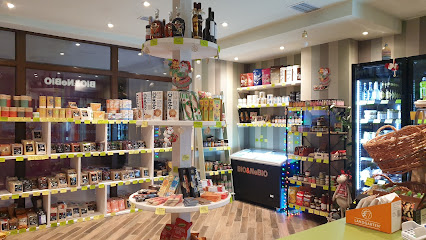
Life According to KAWA
Discover the perfect blend of coffee, creativity, and local charm at Life According to KAWA in Dubrovnik.
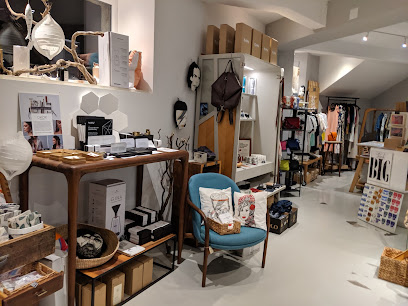
Dubrovnik City shop - IRON THRONE
Discover a world of unique souvenirs and local treasures at Iron Throne Souvenir Shop in Dubrovnik, where memories are crafted and stories unfold.
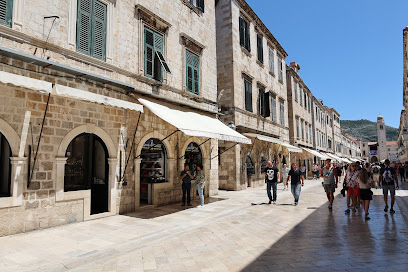
Note Bene
Discover unique Croatian crafts and heartfelt souvenirs at Note Bene, the charming souvenir store in the heart of Dubrovnik.
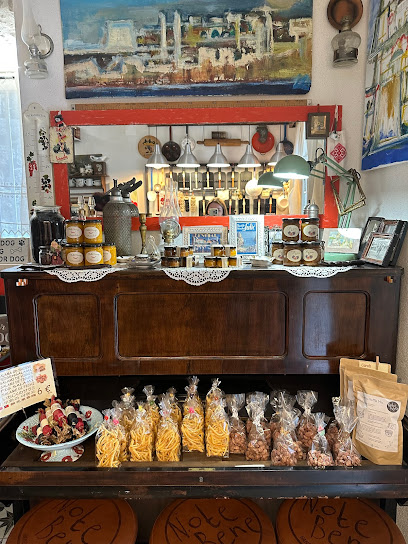
Terra Croatica
Explore the best of Croatian culture at Terra Croatica in Dubrovnik, featuring handcrafted souvenirs, traditional foods, and local artistry.
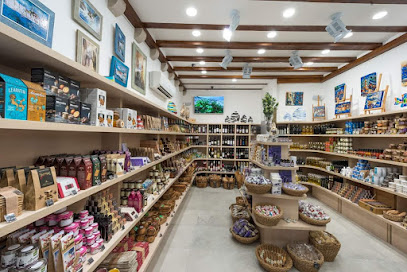
Dubrovačka kuća -Dubrovnik house
Explore the charm of Dubrovnik at Dubrovačka kuća, your go-to gift shop for authentic Croatian souvenirs and local artistry.
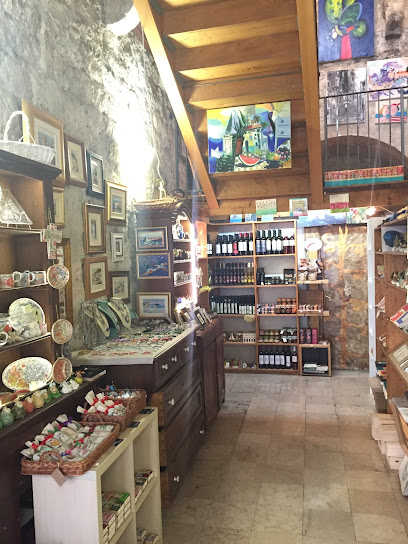
GIFT & ART SHOP MEDUSA
Explore the artistry of Dubrovnik at Gift & Art Shop Medusa, where unique handcrafted gifts meet natural goods in a charming atmosphere.
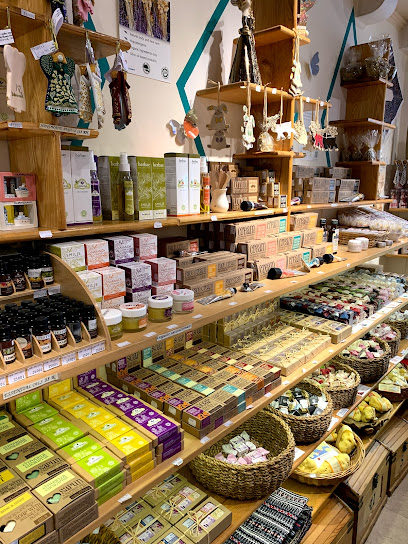
Dubrovnik Treasures Jewelry Store - Adriatic Coral, Pearls & Semi-precious Stones
Explore exquisite Adriatic coral, pearls, and semi-precious stones at Dubrovnik Treasures Jewelry Store, where local craftsmanship meets elegance.
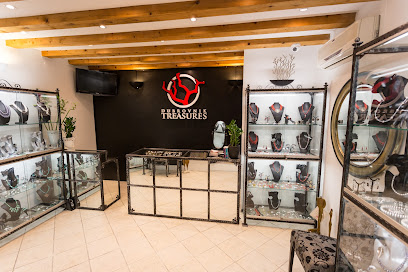
House Of The Game
Explore House Of The Game in Dubrovnik, where gaming memorabilia meets delightful souvenirs in a unique gift shop and museum experience.
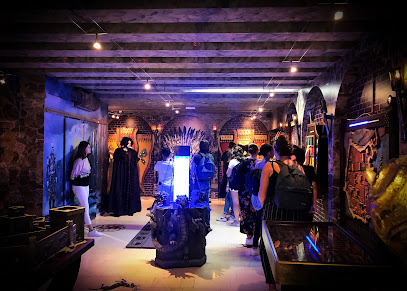
Clara Stones Jewellery
Explore exquisite handcrafted jewelry at Clara Stones in Dubrovnik, where each piece tells a unique story of artistry and elegance.
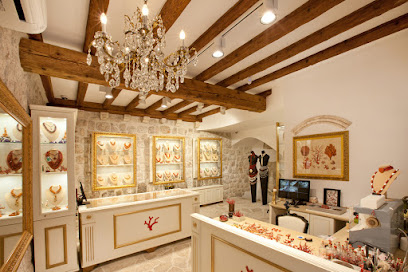
Uje
Explore Uje in Dubrovnik for the finest selection of local delicacies and a taste of authentic Croatian cuisine.
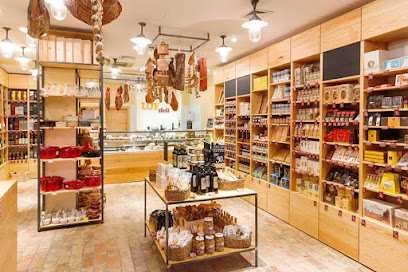
VENTOLA Souvenir Shop
Explore VENTOLA Souvenir Shop in Dubrovnik for unique gifts and authentic local crafts that capture the spirit of this enchanting city.
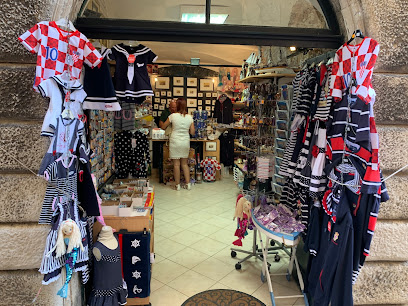
Stradun Fashion
Discover unique souvenirs and stylish fashion items at Stradun Fashion, the quintessential gift shop in the heart of Dubrovnik.
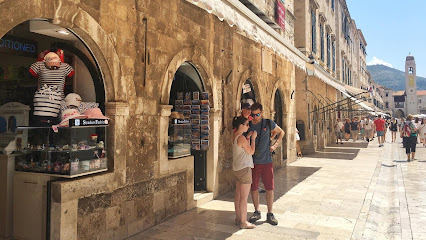
Tilda Dubrovnik
Explore the vibrant spirit of Dubrovnik at Tilda, your go-to gift shop for unique, locally crafted treasures and souvenirs.
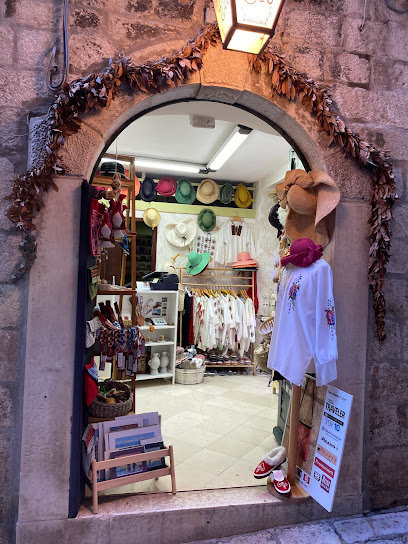
Essential bars & hidden hideouts
Cave Bar More
Experience the unique charm of Cave Bar More in Dubrovnik, a breathtaking bar set within a natural cave overlooking the stunning Adriatic Sea.
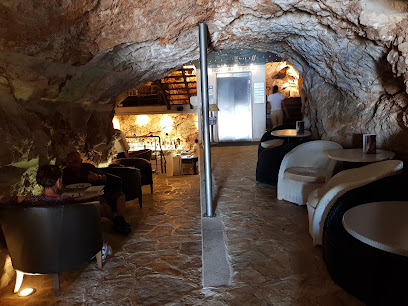
The Gaffe
Experience the vibrant charm of an Irish pub nestled in the heart of Dubrovnik, where good food and great drinks await every traveler.
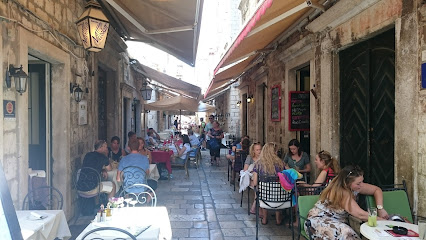
MILK fun area & cocktails
Discover the ultimate nightlife experience at MILK Fun Area & Cocktails in Dubrovnik, where vibrant atmosphere meets expertly crafted cocktails.
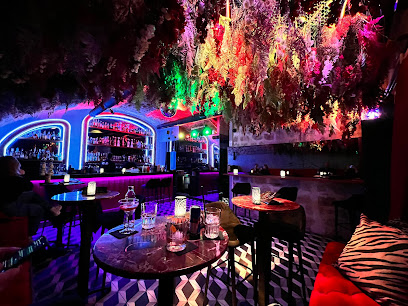
Buzz bar
Discover the lively Buzz Bar in Dubrovnik, where local charm meets vibrant nightlife, perfect for an unforgettable evening.

Celtic Bar Belfast Dubrovnik
Experience the charm of an authentic Irish pub in the heart of Dubrovnik with a delightful selection of drinks and local cuisine.
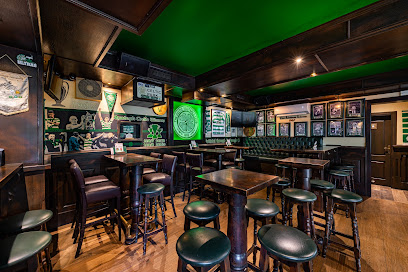
Mr Foster bar
Discover the vibrant atmosphere of Mr. Foster Bar in Dubrovnik, where unique cocktails and friendly service create an unforgettable experience.
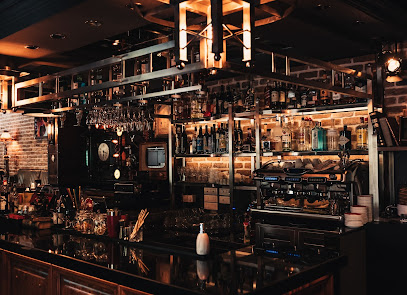
Beer Factory Dubrovnik
Experience the best of local craft beers in a vibrant setting at Beer Factory Dubrovnik - a must-visit for beer lovers and tourists alike.
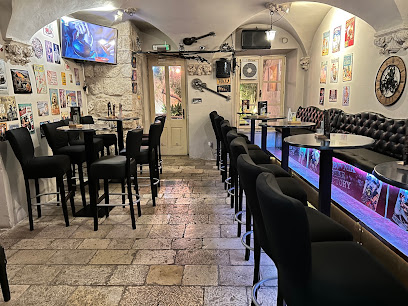
THE BAR
Discover the vibrant nightlife at The Bar in Dubrovnik, where expertly crafted cocktails meet a warm, inviting atmosphere.
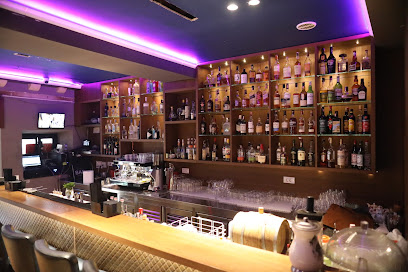
D'VINO WINE BAR DUBROVNIK
Experience the charm of Dubrovnik at D'VINO Wine Bar, where exquisite wines meet delectable cuisine in a cozy atmosphere.
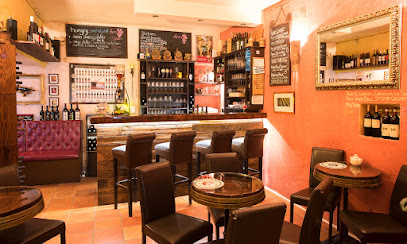
Love Bar
Discover Love Bar in Dubrovnik: A lively spot for cocktails, local brews, and unforgettable nightlife experiences amidst stunning surroundings.
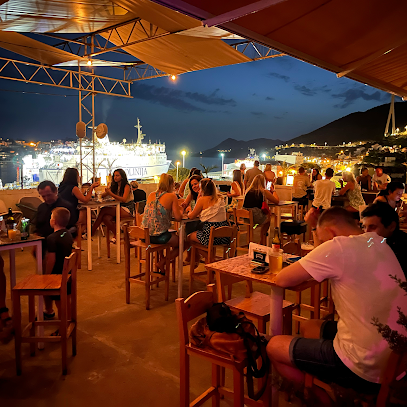
Fratellos Prosecco Bar Dubrovnik
Experience the best of Dubrovnik's nightlife at Fratellos Prosecco Bar, where exquisite drinks and stunning ambiance await.

Glam Bar - #beertherapy
Discover the vibrant ambiance of Glam Bar in Dubrovnik, where craft beers, cocktails, and tapas come together in a delightful experience.
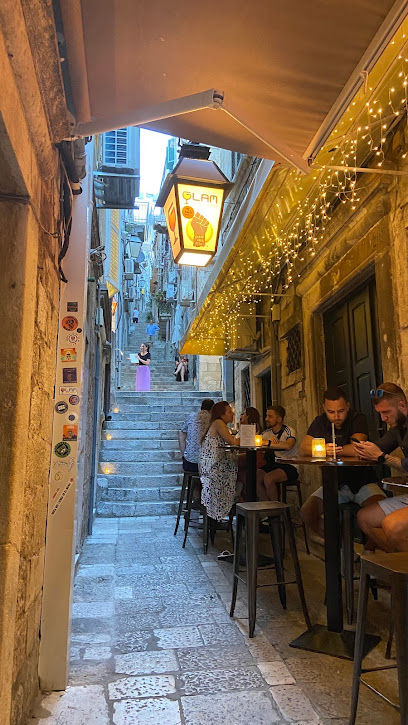
Pub Dubrovnik
Discover the lively spirit of Dubrovnik at Pub Dubrovnik, a top gastropub for cocktails, tapas, and unforgettable nightlife experiences.
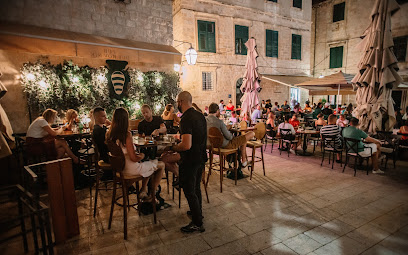
NoneNina Bar
Experience the vibrant nightlife of Dubrovnik at Nina Bar, where creative cocktails and a lively atmosphere await.
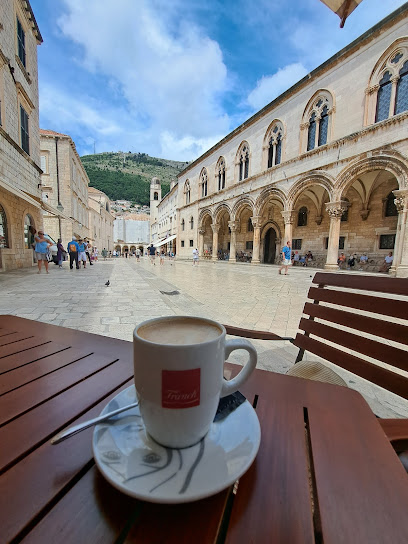
Primo
Discover the energetic ambiance and exquisite drink selection at Primo Bar, a top destination for nightlife in the heart of Dubrovnik.
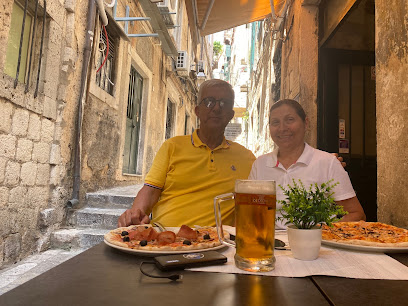
Local Phrases
-
- HelloBok
[bohk] - GoodbyeDoviđenja
[doh-vee-jen-ya] - YesDa
[dah] - NoNe
[neh] - Please/You're welcomeMolim/ Nema na čemu
[moh-leem/ ne-mah nah cheh-moo] - Thank youHvala
[hvah-lah] - Excuse me/SorryOprosti/Izvini
[oh-proh-stee/eez-vee-nee] - How are you?Kako si?
[kah-koh see] - Fine. And you?Dobro. A ti?
[doh-broh. ah tee] - Do you speak English?Govoriš li engleski?
[goh-voh-reesh lee ehn-gleh-skee] - I don't understandNe razumijem
[neh rah-zoo-mee-yem]
- HelloBok
-
- I'd like to see the menu, pleaseMogu li vidjeti jelovnik, molim
[moh-goo lee vee-dyeh-tee yeh-lohv-neek, moh-leem] - I don't eat meatNe jedem meso
[neh yeh-dehm meh-soh] - Cheers!Živjeli!
[zhee-vee-yeh-lee] - I would like to pay, pleaseŽelim platiti, molim
[zheh-leem plah-tee-tee, moh-leem]
- I'd like to see the menu, pleaseMogu li vidjeti jelovnik, molim
-
- Help!Upomoć!
[oo-poh-mohtch] - Go away!Idi odavde!
[ee-dee oh-dahv-deh] - Call the Police!Pozovite policiju!
[poh-zoh-vee-teh poh-lee-tsee-yoo] - Call a doctor!Pozovite doktora!
[poh-zoh-vee-teh dohk-toh-rah] - I'm lostIzgubio/la sam se
[eez-goo-byoh/lah sahm sehh] - I'm illBolesno mi je
[boh-lehs-noh mee yeh]
- Help!Upomoć!
-
- I'd like to buy...Želim kupiti...
[zheh-leem koo-pee-tee] - I'm just lookingSamo gledam
[sah-moh gleh-dahm] - How much is it?Koliko košta?
[koh-lee-koh koh-shta] - That's too expensiveTo je pre skupo
[toh yeh preh skoo-poh] - Can you lower the price?Možete li spustiti cijenu?
[moh-zheh-teh lee spoos-tee-tee tsee-yeh-noo]
- I'd like to buy...Želim kupiti...
-
- What time is it?Koliko je sati?
[koh-lee-koh yeh sah-tee] - It's one o'clockJedan je sat
[yeh-dahn yeh saht] - Half past (10)Pola (deset)
[poh-lah (deh-set)] - MorningJutro
[yoo-troh] - AfternoonPopodne
[poh-pohd-neh] - EveningVečer
[veh-chehr] - YesterdayJučer
[yoo-chehr] - TodayDanas
[dah-nahs] - TomorrowSutra
[soo-trah] - 1Jedan
[yeh-dahn] - 2Dva
[dvah] - 3Tri
[tree] - 4Četiri
[cheh-tee-ree] - 5Pet
[peht] - 6Šest
[shehst] - 7Sedam
[seh-dahm] - 8Osam
[oh-sahm] - 9Devet
[deh-veht] - 10Deset
[deh-set]
- What time is it?Koliko je sati?
-
- Where's a/the...?Gdje je...
[gdyeh yeh] - What's the address?Koja je adresa?
[koh-ya yeh ah-deh-sra] - Can you show me (on the map)?Možete li mi pokazati (na karti)?
[moh-zheh-teh lee mee poh-kah-zah-tee (nah kahr-tee)] - When's the next (bus)?Kada je sljedeći (autobus)?
[kah-dah yeh slyeh-deh-chee (ow-toh-boos)] - A ticket (to ....)Jednu kartu (do ....)
[yehd-noo kahr-too (doh ....)]
- Where's a/the...?Gdje je...
History of Dubrovnik
-
Dubrovnik, originally known as Ragusa, was founded in the 7th century by refugees from Epidaurum, a Roman city that was destroyed by Slavs. The city was initially under the protection of the Byzantine Empire, which helped it grow into a significant maritime trading hub.
-
In 1358, Dubrovnik became a self-governing city-state under the Treaty of Zadar, marking the beginning of the Republic of Ragusa. This period saw the city flourish as a major maritime power, rivalling Venice in trade and commerce across the Mediterranean.
-
The 15th and 16th centuries are considered the Golden Age of Dubrovnik. During this time, the city-state achieved remarkable economic prosperity and cultural development. The construction of the iconic city walls and many of its beautiful Gothic, Renaissance, and Baroque buildings took place during this era.
-
Dubrovnik was known for its skilled diplomacy and neutral stance, which allowed it to maintain independence and flourish as an important trade center. The city established extensive trade networks across the Mediterranean, the Ottoman Empire, and beyond, exporting goods such as salt, silver, and wool.
-
In 1667, Dubrovnik was struck by a catastrophic earthquake that nearly destroyed the entire city, killing over 5,000 residents. Despite the massive destruction, the resilient citizens rebuilt the city, preserving its historical architecture and continuing its legacy as a prominent trading hub.
-
The Republic of Ragusa met its end in 1808 when Napoleon's forces occupied Dubrovnik. The city was later incorporated into the Austrian Empire following the Congress of Vienna in 1815. This marked the end of over four centuries of the city-state's independence.
-
During World War II, Dubrovnik experienced occupation by Italian and German forces. After the war, it became part of the Socialist Federal Republic of Yugoslavia. The city continued to be a significant cultural and tourist destination during the Yugoslav era.
-
One of the most tragic events in Dubrovnik's recent history occurred during the Croatian War of Independence from 1991 to 1992. The city was besieged by the Yugoslav People's Army, leading to significant damage and loss of life. The resilience of its citizens and subsequent restoration efforts have preserved Dubrovnik's historical and cultural heritage.
-
In 1979, Dubrovnik's Old Town was designated a UNESCO World Heritage Site, recognizing its historical significance and architectural beauty. This status has helped protect and preserve the city's rich cultural heritage for future generations.
Dubrovnik Essentials
-
Dubrovnik is accessible via Dubrovnik Airport (DBV), located about 20 km from the city center. The airport is well-connected with major European cities. From the airport, you can take a shuttle bus, taxi, or rent a car to reach Dubrovnik. There are also ferry services connecting Dubrovnik with other Croatian coastal cities and Italian ports, offering another scenic route into the city.
-
Dubrovnik is a walkable city, especially within the Old Town. For longer distances, you can use local buses which are efficient and run frequently. Taxis are available but can be pricey. Car rentals are an option, but parking can be challenging in the city center. For nearby islands, water taxis and ferries are available.
-
The official currency in Croatia is the Croatian Kuna (HRK). Credit cards are widely accepted in hotels, restaurants, and shops, but it's a good idea to carry some cash for smaller establishments and markets. ATMs are readily available throughout the city.
-
Dubrovnik is generally a safe city for tourists. However, like any popular tourist destination, pickpocketing can occur, especially in crowded areas like the Old Town. Avoid isolated areas at night and always keep an eye on your belongings. There are no significant high-crime areas targeting tourists, but staying vigilant is always wise.
-
In case of emergencies, dial 112 for immediate assistance. Dubrovnik has several medical facilities, and pharmacies are available for minor health issues. It's advisable to have travel insurance that covers medical emergencies. The local police are friendly and helpful, so don't hesitate to approach them if needed.
-
Fashion: Do dress modestly when visiting religious sites. Avoid wearing swimwear or very revealing clothing outside of the beach area. Religion: Do respect local customs, and if visiting a church, ensure shoulders and knees are covered. Public Transport: Do be respectful and give up your seat to elderly passengers. Don't eat or drink on public transport. Greetings: Do greet people with a friendly 'Dobar dan' (Good day). A handshake is common when meeting someone for the first time. Eating & Drinking: Do try local delicacies like 'black risotto' and 'pasticada'. Don't refuse food or drink offerings as it is considered impolite.
-
To experience Dubrovnik like a local, visit the Gundulić Square Market in the morning for fresh produce and local specialties. Try to explore beyond the Old Town; visit the Lapad Peninsula for a more relaxed vibe. Take the time to engage with locals who are often willing to share insights about the city. Don't miss a walk along the city walls for breathtaking views of the Adriatic Sea.
Trending Landmark in Dubrovnik
-
Dubrovnik City Walls
-
Dubrovnik Cable Car
-
Fort Lovrijenac
-
Porat Dubrovnik
-
The Cathedral of the Assumption of the Virgin Mary
-
Rector's Palace
-
Fort Imperial
-
Dubrovnik Walks
-
Sponza Palace
-
Free Spirit Tours - Dubrovnik free walking tour and other tours
-
Pile Gate
-
Onofrio's Large Fountain
-
Church of St. Blaise
-
Franciscan Church and Monastery
-
Tvrđava Minčeta
Nearby Cities to Dubrovnik
-
Things To Do in Trebinje
-
Things To Do in Herceg Novi
-
Things To Do in Perast
-
Things To Do in Tivat
-
Things To Do in Kotor
-
Things To Do in Nikšić
-
Things To Do in Cetinje
-
Things To Do in Budva
-
Things To Do in Mostar
-
Things To Do in Podgorica
-
Things To Do in Bar
-
Things To Do in Makarska
-
Things To Do in Ulcinj
-
Things To Do in Hvar
-
Things To Do in Sarajevo
















